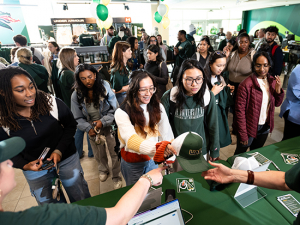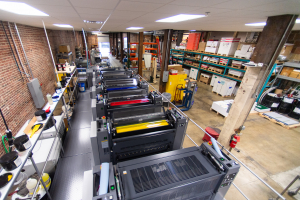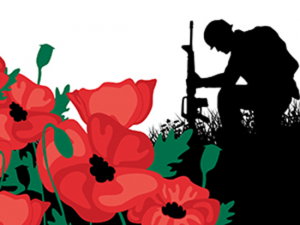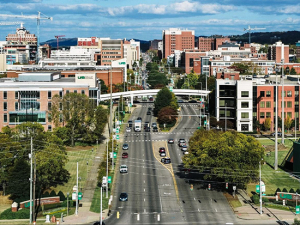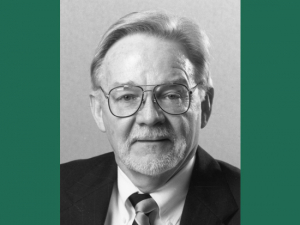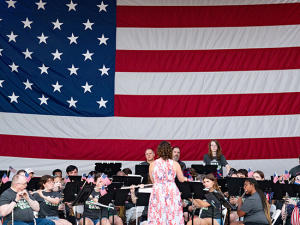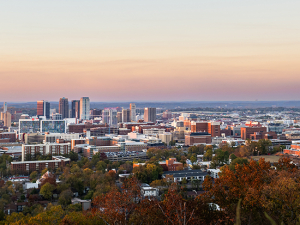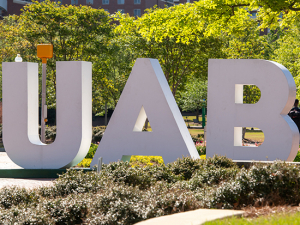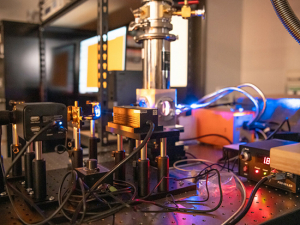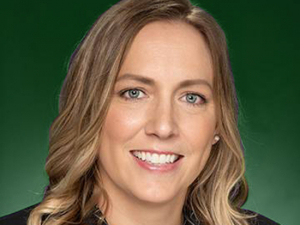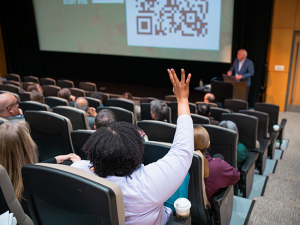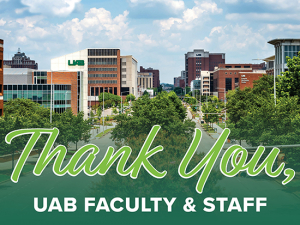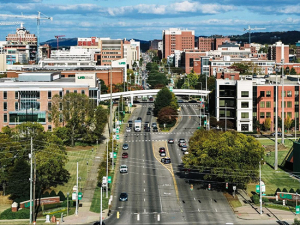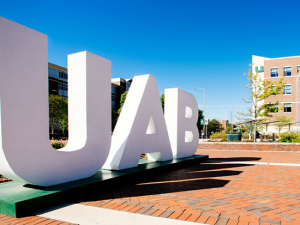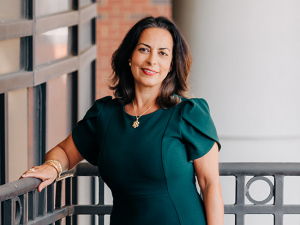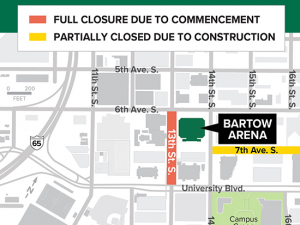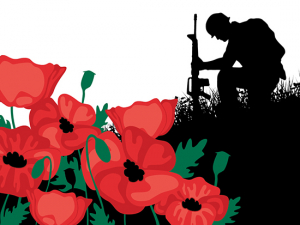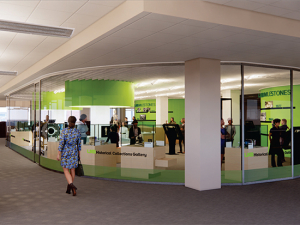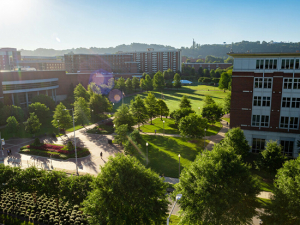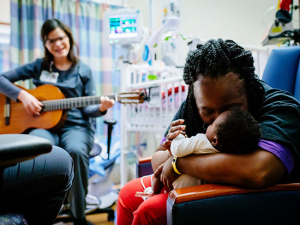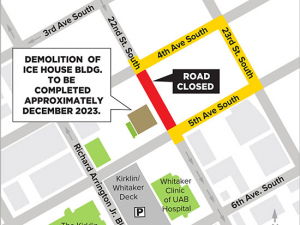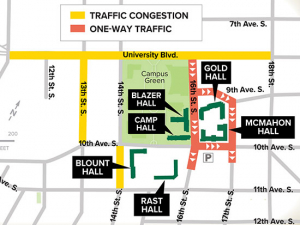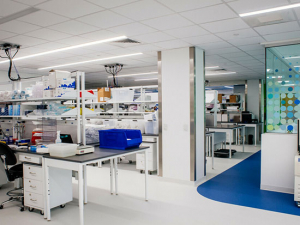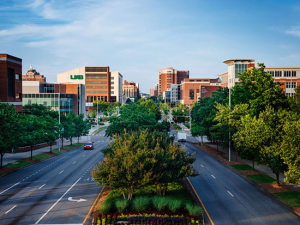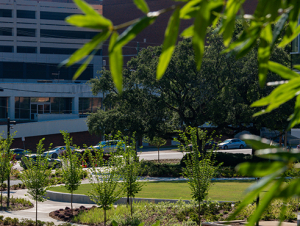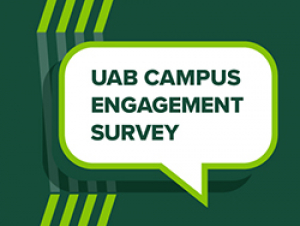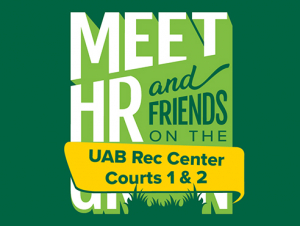 During the fall 2023 semester, UAB students, faculty and staff will have the opportunity to provide feedback and influence UAB’s next strategic plan — Forging Ahead — which will guide continued, purposeful growth for 2024-2028.
During the fall 2023 semester, UAB students, faculty and staff will have the opportunity to provide feedback and influence UAB’s next strategic plan — Forging Ahead — which will guide continued, purposeful growth for 2024-2028.
As we look ahead, we revisit the success achieved together through Forging the Future, UAB’s current strategic plan. Here, we celebrate our shared results and positive momentum in the Education pillar of our mission and the 2018-2023 strategic plan.
Education objectives outlined in Forging the Future were to strengthen and expand innovative academic programs to enhance UAB’s national and global reputation; ensure student success through holistic development that addresses diverse needs; create a signature core curriculum focused on modeling and developing socially conscious global citizens and leaders; engage students, faculty, staff and community members in experiential learning; and foster access, inclusive excellence and equity in teaching, learning and mentorship development programs.
Innovative programs
With the strategic plan, UAB sought to leverage its existing strengths and continue to develop new programs that would appeal to the students it hoped to attract, says Senior Vice President for Academic Affairs and Provost Pam Benoit, Ph.D. One target is joint programming — bridging disciplines to find an intersection where UAB is uniquely suited to deliver first-class education.
“This is really important,” Benoit said. “We want to integrate courses and programs across disciplinary fields where great work is happening.”
UAB, which had launched successful programs such as biomedical engineering, medical sociology and music technology, explored new frontiers in recent years. From that emerged new undergraduate degrees in bioinformatics, cancer biology, genetics and genomic sciences, immunology, and neuroscience offered jointly by the College of Arts and Sciences and the Heersink School of Medicine.
“These are built around the strengths in health and other fields in which we excel, and they will prepare students for future careers,” Benoit said.
To compete and thrive, UAB must capitalize on its unique strengths and attract a diverse body of teachers and learners, eager to make a lasting impact in their field or on their community — or the world — and prepare them to lead, Benoit says.
Focus on the whole student
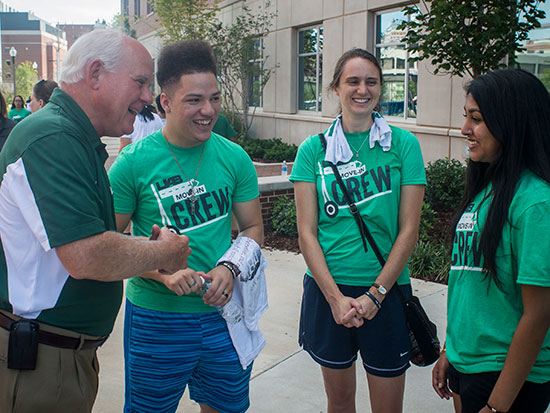 UAB’s national reputation as a leading research institution and academic medical center helps it attract high-achieving students. And, as a public institution in Alabama, located in one of the state’s largest metropolitan areas, it also represents one of the best educational opportunities for first-generation and underrepresented students throughout the state to seize new opportunities through academic achievement.
UAB’s national reputation as a leading research institution and academic medical center helps it attract high-achieving students. And, as a public institution in Alabama, located in one of the state’s largest metropolitan areas, it also represents one of the best educational opportunities for first-generation and underrepresented students throughout the state to seize new opportunities through academic achievement.
Since 2012, total enrollment at UAB has increased 17 percent, to 21,639 in fall 2022 from 17,999. That represents 15 percent growth in undergraduate enrollment and a 28 percent increase in graduate enrollment during the past decade.
The number of first-generation students has risen to 3,787, an increase of 34 percent during the same period. As a result, the percentage of underrepresented students has grown to 44.4 percent in 2022 from 34.7 percent in 2012, an increase of nearly 10 percent despite the rise in total enrollment. In 10 years, the average ACT score for entering freshmen has risen to 26.55 from 24.53 and the average high school GPA has increased to 3.79 from 3.53.
One foundation for success is an emphasis on the first-year experience. This includes special welcoming activities and course-specific requirements to help students integrate into the campus community. Through Blazer Beginnings, the new student orientation program, freshmen complete a two-day program during which they meet with faculty and academic advisers, register for classes, discuss academic expectations, become familiar with campus organizations, and much more. A requirement for first-year entering freshmen to live on campus, absent limiting circumstances, helps facilitate that bond and foster a campus community.
One telling measure of success is the retention rate, which measures the percentage of first-time undergraduate students who return to the same institution the following fall. The National Student Clearinghouse establishes the overall rate at 75 percent. In 2012-13, 79.9 percent of UAB’s first-year students returned to campus; by 2021-22, the rate had risen to 83.9 percent.
UAB also introduced a second-year experience program to provide additional resources for sophomores to enhance their academic progress. The National Student Clearinghouse in its 2022 publication, Completing College, reported the national six-year completion rate reached 62.2 percent, and in Alabama it rose slightly to reach 60.1 percent. By the academic year 2021-22, UAB’s six-year graduation rate had risen more than 14 percentage points to 62.4 percent from 48.2 percent in 2012-13.
Service and experiential learning
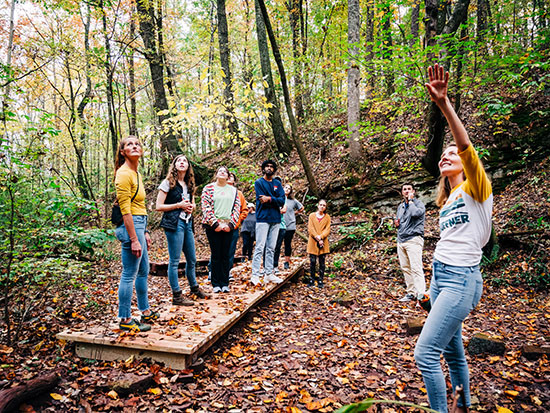 Service-learning is as much about who UAB students are as it is who we want them to become: socially conscious global citizens and leaders. UAB connects students and faculty to community and nonprofit partners, through service opportunities embedded in coursework, to provide hands-on learning during civic engagement that supports the local and global communities.
Service-learning is as much about who UAB students are as it is who we want them to become: socially conscious global citizens and leaders. UAB connects students and faculty to community and nonprofit partners, through service opportunities embedded in coursework, to provide hands-on learning during civic engagement that supports the local and global communities.
For more than 20 years, UAB Student Affairs has organized Into the Streets — annual days of service that inspire the student body to participate in community service projects around the Birmingham area, helping propel UAB to the President’s Higher Education Community Service Honor Roll multiple times.
In recent years, UAB has expanded opportunities to include MLK Day of Service, the annual UAB Habitat for Humanity Home Build, daily operations in Blazer Kitchen and other contributions through classes and UAB’s community engagement platform, BlazerPulse. A decision to integrate service-learning into the curriculum has expanded UAB’s reach further into the community by engaging students, faculty, staff and community members in experiential learning.
“We have a very robust service-learning portfolio that enables students in all areas to work with many organizations in our community,” said Provost Pam Benoit. “The courses organized around service-learning are consistent with our goal of the City as Classroom and make the students feel they are part of the community.”
The UAB Service Learning and Undergraduate Research Expo, held every semester, showcases the research done by UAB students and highlights excellence in research, creative activity, scholarship and the community engagement of undergraduate students.
Expanding online learning
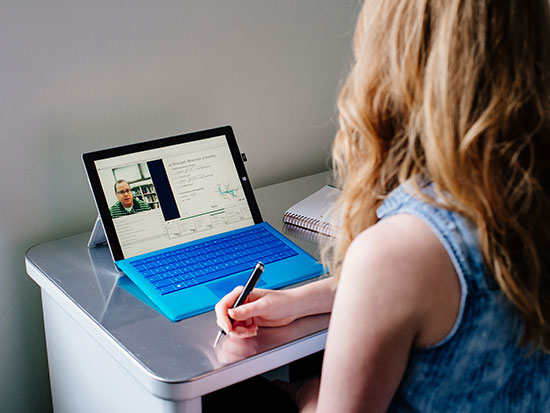 A changing world also led to changes in the way education is delivered: online. While the halt to in-person instruction during the COVID-19 pandemic caught many campuses unprepared, UAB earned national recognition for innovative technology solutions that made its courses accessible.
A changing world also led to changes in the way education is delivered: online. While the halt to in-person instruction during the COVID-19 pandemic caught many campuses unprepared, UAB earned national recognition for innovative technology solutions that made its courses accessible.
UAB had been steadily increasing its online offerings for more than a decade, and UAB’s Strategic Investment Fund leveraged in Forging the Future provided resources to strategic priorities, including instructional design and support services to faculty and resources for essential marketing, says Provost Pam Benoit.
“There is value in in-person education,” Benoit said. “But online education gives us another tool to reach students. Our faculty now see the clear positives in offering online programs.”
In the past 10 years, the number of online programs has grown to 54 in 2022 from a mere four in 2012. Fully online undergraduate and graduate degrees are available, as are minor courses of study and certificates. Many of those have completed the Quality Matters peer-review process, meeting the gold standard for online courses and programs. A number of programs in the Collat School of Business, College of Arts and Sciences, and the schools of Engineering and Education were among the nation’s best online programs ranked by U.S. News in 2022. In November, UAB’s online learning entity, UAB Online, was ranked No. 15 by Newsweek on its 2023 list of America’s Top Online Colleges.
Access to excellence
UAB’s Honors College experienced a 351 percent increase in enrollment from 2012-2022. Created nearly 40 years ago to serve high-achieving students and provide a top-rate honors experience for intellectually curious and engaged students from all seven undergraduate colleges and schools, the college offers a mixture of challenging courses and academic enrichment, including undergraduate research, international study, internships and service-learning.
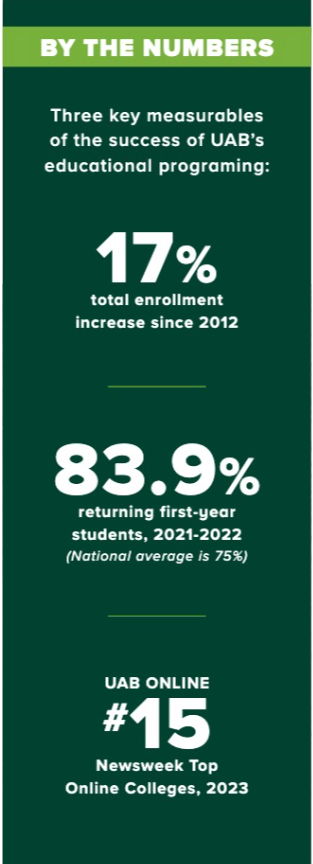 In 2021, a new Honors Hall opened to accommodate the growing student body in the renovated former Snoozy’s bookstore — a two-story, 11,000-square-foot structure that added new classrooms, study rooms, space for gathering, and offices for faculty and staff.
In 2021, a new Honors Hall opened to accommodate the growing student body in the renovated former Snoozy’s bookstore — a two-story, 11,000-square-foot structure that added new classrooms, study rooms, space for gathering, and offices for faculty and staff.
Blazer Core Curriculum
UAB’s new core curriculum — a common set of courses that provide a foundational academic experience for undergraduate students — is a key objective of Forging the Future. It places community and connection at the heart of undergraduate education, and exists to develop fundamental skills, broaden intellectual perspectives, and encourage critical thinking and problem-solving that are critical for success in college and in their future careers and communities.
Provost Pam Benoit convened a committee in 2017, led by Alison Chapman, Ph.D., professor and chair in the Department of English, and Suzanne Judd, Ph.D., professor of biostatistics in the UAB School of Public Health, to draft a new core. The committee conducted surveys and focus groups among faculty and students to seek input and direction and articulate a set of guiding principles.
The result is a broad array of courses that launched in fall 2023, intended to help students develop critical-thinking, decision-making and communication skills that will enable them to discuss new ideas, question biases and assumptions, and engage in their communities to solve real-world problems.
Benoit noted two unique features that set UAB’s core curriculum apart from the rest. “The first is the concept of City as Classroom,” she said. This initiative will immerse students across all disciplines in undergraduate research, experiential learning or other high-impact practices that enable them to see the role of knowledge in addressing the challenges and opportunities in Greater Birmingham.
“Through this, we are integrating education into the environment the students find themselves in,” Benoit said.
The second is flags. “Students earn flags for coursework and activities that cultivate specific competencies — skills, perspectives and habits of mind — that reflect the goals of the core and ideals of UAB,” Benoit said. Examples include wellness, sustainability, justice, global citizenship and community engagement.
“Faculty can build high-impact activities into the course requirements,” she added.
When Chris Minnix, Ph.D., was named director of UAB’s Signature Core Curriculum, he said he hoped to use Birmingham as a text for teachers to use and students to explore — through case studies or field research — to learn about the city as a local and globalizing space.
“The Blazer Core Curriculum is far more than a list of courses and requirements,” Minnix said. “From the earliest stages of their college study, students in our innovative core curriculum encounter courses and programs that prepare them to lead professional and civic lives that serve the betterment of people, places and the planet.
“Blazer Core students have greater choice and flexibility in mapping out their core curriculum, which allows them to pursue courses, ideas and experiences that they are passionate about, as well as to discover new passions and interests,” Minnix said.
“We asked stakeholders from across campus to take a close look at the trends and challenges facing higher education and academic medical centers as we move into the future,” said UAB President Ray Watts. “The new curriculum capitalizes on UAB’s unique strengths and helps us further invest in our students’ growth and development.”
See growth recaps of the Research, Community Engagement and Patient Care pillars and learn more about Forging the Future successes in Education and across all UAB mission pillars in UAB Magazine.

